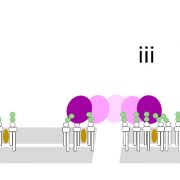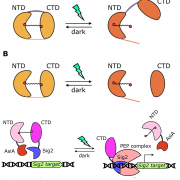
An oomycete peptide cytolysin forms transient small pores in lipid membranes (Sci. Adv.)
Plant Science Research WeeklyNLPs (Necrosis and ethylene-inducing peptide 1–like proteins) are small peptides produced by a variety of plant pathogens. Some NLPs are cytolysins meaning that they trigger lysis of their target cells. Here, Pirc et al. use an assortment of tools including molecular dynamics (MD) simulations, neutron…

Live Plant Cell Tracking: A Fiji plugin to analyze cell proliferation dynamics and understand morphogenesis (Plant Physiol.)
Plant Science Research Weekly
Live Plant Cell Tracking: A Fiji plugin to analyze cell proliferation dynamics and understand morphogenesis
Morphogenesis in plants occurs in 3D space over time, referred to as 4D. Recent advances in high-resolution microscopy imaging and computational pipelines have helped to better understand…

Plant Science Research Weekly: April 1, 2022
WWR Full PostChloroplast protein import determines plant proteostasis and retrograde signaling
The neurological condition Huntington’s disease is caused by mutated versions of the Huntingtin gene that encode expanded stretches of polyglutamine repeats, resulting in protein aggregation. However, despite the widespread…

